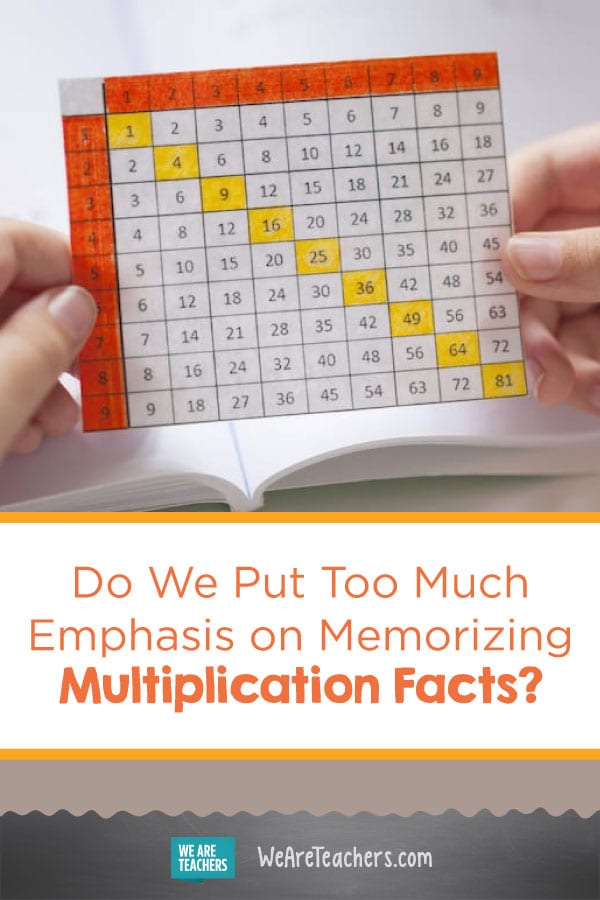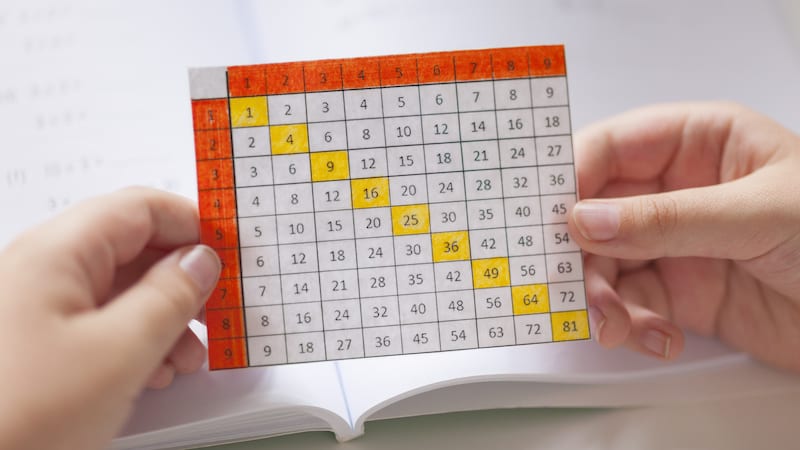A non-teacher friend recently mentioned how, as a kid, he had really loved math class until the fourth grade. Before he even told me, I knew exactly where he was tripped up all those years before: memorizing multiplication facts.
For so long, third and fourth graders have been asked to run the gauntlet of multiplication fact memorization. Students are usually expected to practice their facts at home and are tested with sheets of problems they must solve in a set amount of time.
Some lucky students memorize their math facts with ease. Many students memorize a good chunk of the prescribed facts, but struggle with a handful of the more difficult ones.
Finally, you have students like my friend who never manage to move beyond their 3s or 4s facts. An unfortunate consequence is that these students can see their struggle with facts as an indication that they are not good at math.
Instead of putting in so much time into rote memorization, teachers can take math facts further by shifting their focus to fact fluency.
Fact Fluency vs. Memorization
When explaining the difference between memorization and fact fluency to students, I often describe memory’s limitations. Memory is all or nothing. If you have something memorized, you simply know the math fact or poem or state capital you set out to memorize.
On the other hand, students often feel stuck when they don’t have a fact memorized. They ask others for the answer instead of having a toolbox of strategies to get at the fact they can’t remember.
Fact fluency, like language fluency, means students can flexibly apply what they already know. They find facts they don’t recall by using the facts they already have memorized. They double their 2s facts to get their 4s facts. And they easily add one group more to get the fact they need. Not only do they see how multiplication facts are related to one another, but they also efficiently use the relationships between multiplication, addition, subtraction, and division.
3 Ways to Increase Fact Fluency Today
1. Put less emphasis on time and speed

I’ve heard arguments made that timed tests are the only way to build automaticity with facts because they keep students using from less-efficient strategies such as skip-counting. While we want to encourage efficient strategies, timed tests aren’t as effective as direct instruction in developing these skills. Timed tests offer a good snapshot of how well students have memorized their facts, but are not a powerful teaching tool.
2. Prompt students to make connections between facts

One deceptively simple strategy to improve fact fluency is to start asking students how they can use one fact they know to find another they may not.
Too often, students reflexively look to teachers and parents to give them the answer to 7 times 8 without first trying to get it on their own. The focus on rote memorization has left our students thinking that math facts are discrete pieces of information that aren’t related to one another. Foster problem-solving skills by prompting them to first search for the product for themselves.
3. Explicitly teach strategies

We can’t assume students know how multiplication facts are related. Take time to explain strategies for using an easier fact to find a trickier one. For example, students can use the product of 8 X10 to find the product of 8 X 9 by subtracting one group of 8. Other strategies include doubling doubles to find 4s facts or doubling 4s facts to find 8s facts.
Finally, teach students to apply the concept of partial products to their multiplication facts. Repeatedly show them how to combine two or more products to find an unknown answer. For example, have students use the products of 3 X 5 and 6 X 5 to find the product of 8 X 5.
What’s your take on teaching multiplication? Do you explicitly teach fact fluency? Come in share in our WeAreTeachers HELPLINE group on Facebook. WeAreTeachers HELPLINE is a place for teachers to ask and respond to questions on classroom challenges, collaboration and advice.
Plus…free multiplication spinner games and multiplication anchor charts.


